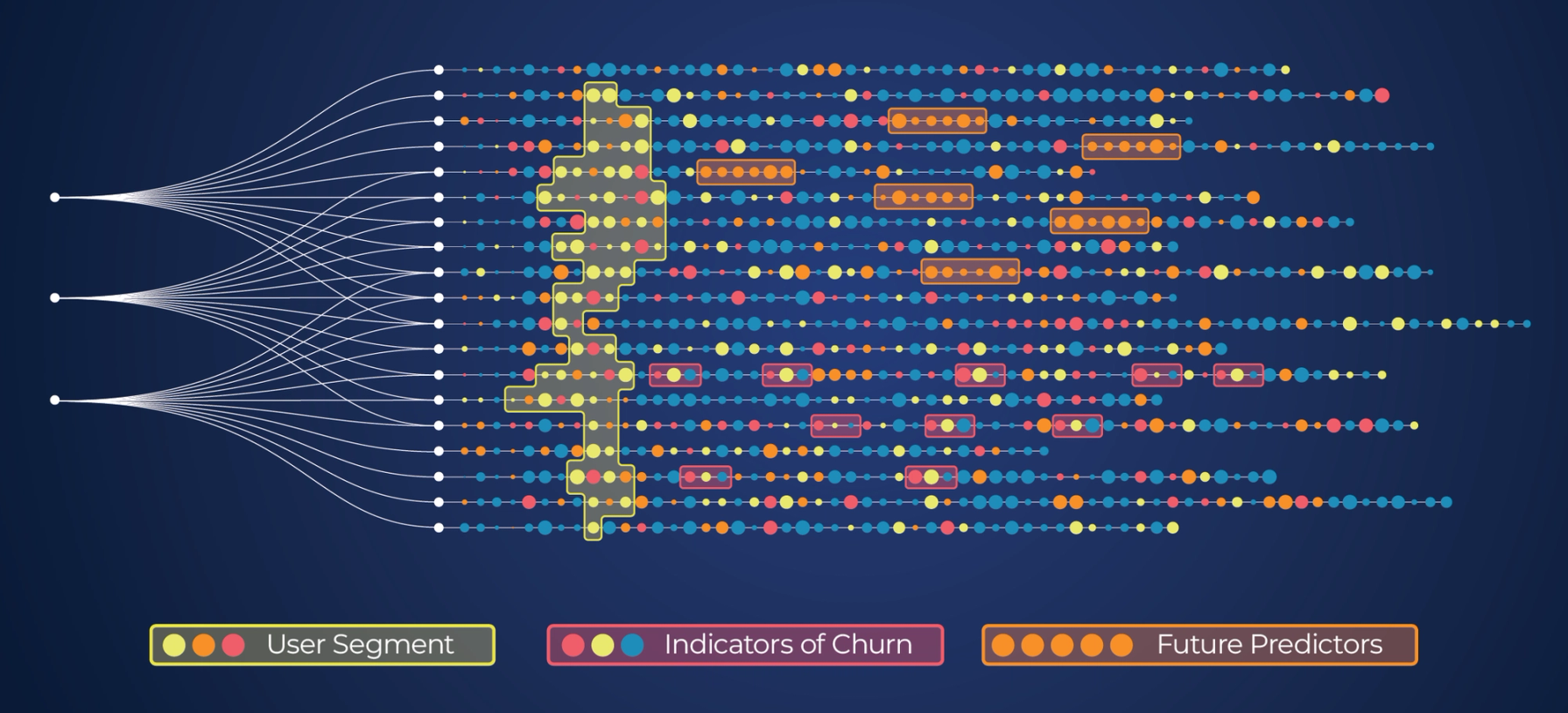
The Next Essential Tool for Root Cause Analysis
December 12, 2024Root cause analysis (RCA) is the detective work of process improvement. These tools help us dig into problems and uncover what’s really going on beneath the surface. Classics like fishbone diagrams and Pareto charts have long helped us piece together the “why” behind issues. But sometimes, even with all that structure, we still can’t get to the heart of today’s complex challenges. That’s because the problems we face often have hidden layers of causes that interact in ways we don’t easily see.
Today’s processes are more connected than ever. Data flows in from multiple systems, sensors, and customer touchpoints, each telling only part of the story. Finding clear answers in all that information isn’t easy. Real signals can get buried in noise, masked by multicollinearity, or tangled in factors that influence one another. It’s like searching for a needle in not just one haystack, but a whole barn full of them.
That’s where machine learning comes in. By processing large datasets quickly and spotting patterns that might go unnoticed, machine learning helps uncover deeper insights that can get missed by leveraging traditional RCA tools. It also gives teams a way to predict problems before they happen, notice near misses, and make smarter adjustments before failures occur.
The Power of Machine Learning in RCA
Machine learning brings a data-driven precision to RCA that wasn’t previously possible. Here’s how it amplifies our problem-solving capabilities:
1. Enhanced Data Analysis
With the ability to process vast amounts of data, machine learning reveals patterns, correlations, and anomalies faster than traditional methods. For industries drowning in data—like manufacturing, healthcare, and finance—this speed is invaluable.
2. Predictive Insights
Rather than merely identifying what went wrong, machine learning anticipates future issues by spotting trends and signals. This predictive capability allows teams to shift from reactive firefighting to proactive prevention.
3. Real-Time Monitoring
Machine learning models continuously analyze systems, flagging anomalies as they happen. This real-time capability ensures problems are addressed before they escalate which can be a game-changer for industries in which every second counts.
4. Uncovering Hidden Complexity
When a problem stems from a tangled web of interrelated factors, traditional methods often fall short. Machine learning thrives here, particularly with techniques like classification and regression trees (C/RT). These tools reveal nuanced relationships, helping teams pinpoint root causes even in the most complex scenarios.
Bringing the Concept to Life: A Case Study
Consider a national bank grappling with a rise in customer churn. Churn is notoriously complex. That is, customers rarely leave for a single reason. Instead, the causes are a mix of behaviors, preferences, and external factors. You might spot broad patterns, such as customers leaving after changes in service fees, but if nothing obvious is standing out, that’s when machine learning can help uncover what’s really driving the trend.
This is where EngineRoom, MoreSteam’s all-in-one data analysis and process modeling software for continuous improvement professionals, comes in. EngineRoom makes it easy to apply machine learning tools, like decision trees, to real business challenges and interpret results in a practical, problem-solving context.

To address the issue, the bank uses EngineRoom to build a decision tree model that analyzes a rich dataset including variables like age, education, income, tenure, and account activity. The results are revealing:
- Segment Discovery: The C/RT identifies a specific segment of customers—long-tenured, high-income individuals with low account activity—as the group most likely to churn.
- Contributing Factors: Further analysis shows these customers feel undervalued compared to newer, high-income clients who are offered attractive onboarding perks.
- Predictive Power: The model not only explains past churn but predicts future at-risk customers with a high degree of accuracy.
Armed with these insights, the bank can take targeted action:
- Personalized Retention Strategies: They design loyalty programs specifically for long-tenured customers, offering rewards and incentives that acknowledge their value.
- Proactive Outreach: Customer service teams are equipped with predictive churn lists, allowing them to contact at-risk clients before dissatisfaction turns into departure.
- Enhanced Onboarding Fairness: The bank adjusts its onboarding perks to include upgrades for loyal, existing customers, ensuring they feel as valued as new clients.
These actions lead to measurable results: a significant reduction in churn, increased customer satisfaction scores, and a more equitable perception of the bank’s value proposition. This is the power of machine learning in RCA—it not only diagnoses the issue but provides a roadmap for resolution.
Navigating Challenges in Machine Learning-Driven RCA
As with any advanced tool, there are hurdles to consider when integrating machine learning into RCA:
- Data Quality: A machine learning algorithm is only as good as the data it’s fed. Poor-quality inputs lead to unreliable outputs. If your data contains bias or preconceptions, you might miss important insights or overlook critical variables, skewing the results and potentially reinforcing systemic issues.
- Expertise: Successful implementation requires some degree of specialized knowledge in both data science and RCA. Building this expertise—or partnering with those who have it—is key.
- Ethical Considerations: Handling sensitive data comes with a responsibility to protect privacy and ensure ethical use.
- Bias: Machine learning models can inadvertently reflect and reinforce biases present in the training data. This can lead to unfair or inaccurate conclusions, especially in datasets that lack diversity or represent historical inequalities.
The Evolving Role of RCA in Process Improvement
The goals of RCA have always been the same: discover, correct, and prevent. But the complexity of today’s challenges demands new tools and approaches be added to our toolkit. Machine learning not only sharpens our ability to identify root causes but also enables us to anticipate and mitigate issues before they arise.
By blending the strengths of traditional methods with the advanced capabilities of machine learning, organizations can move from reactive problem-solving to proactive, data-driven improvement. Tools like EngineRoom make that shift achievable by bringing these methods into a single, easy-to-use platform designed for continuous improvement professionals.
Want to keep learning? Subscribe to our newsletter for early updates on webinars, Master Series events, topics like root cause analysis, and all things continuous improvement.

Vice President of Marketing • MoreSteam
Lindsay Van Dyne is responsible for developing and executing MoreSteam’s marketing strategy. She brings a deep understanding of Lean Six Sigma, having served as MoreSteam’s eLearning Product Manager for the company’s comprehensive suite of Yellow, Green, and Black Belt courses. Over the years, she has attended dozens of industry conferences, webinars, and workshops, gaining firsthand insight into the evolving needs of continuous improvement professionals.
Her marketing experience includes technical aspects of search engine optimization (SEO), digital content strategy, lead generation, website development, event management, and partner relationships. Lindsay holds a B.S. in Chemical Engineering from the University of Notre Dame and a B.S. in Computational Physics and Mathematics from Bethel College.








